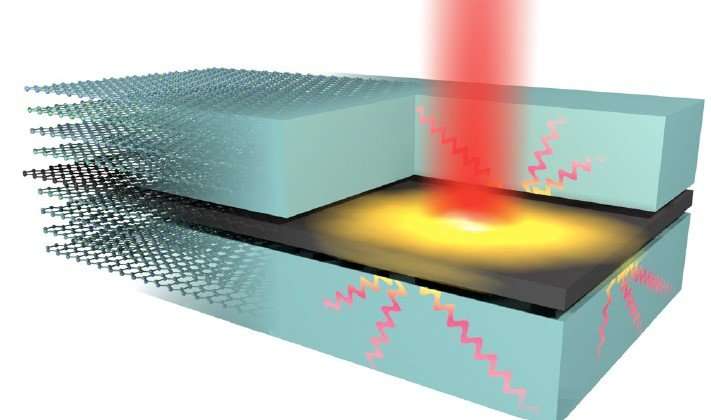Fast flowing heat in graphene heterostructures

Nanoscale heat flow plays a crucial role in many modern electronic and optoelectronic applications, such as thermal management, photodetection, thermoelectrics and data communication. Two-dimensional layered materials could play a role in many of these applications. Perhaps even more promising are so-called van der Waals heterostructures, which consist of different layered two-dimensional materials stacked one on top of the other. These stacks can consist of materials with dramatically different physical properties, while the interfaces between them are ultra-clean and atomically sharp.
Scientists from the European Graphene Flagship, led by ICFO researchers, have recently observed the way in which heat transport occurs in van der Waals stacks, which consist of graphene encapsulated by the dielectric two-dimensional material hexagonal BN (hBN).
In a study published in Nature Nanotechnology titled "Out-of-plane heat transfer in van der Waals stacks through electron-hyperbolic phonon coupling," ICFO researchers, in collaboration with researchers from The Netherlands, Italy, Germany, and United Kingdom, have identified a highly surprisingly effect: Rather than staying within the graphene sheet, the heat actually flows to the surrounding hBN sheets. This out-of-plane heat transfer process occurs on an ultrafast timescale of picoseconds (one millionth of a millionth of a second), and is therefore dominant over competing (in-plane) heat transfer processes.
The heat transfer process occurs through hot graphene electrons (experimentally generated by incident light) that couple to hyperbolic phonon-polaritons in the hBN sheets. These phonon-polaritons propagate within the hBN as light does in an optical fiber, but in this case, for infrared wavelengths and at the nanometer scale. It turns out that these exotic hyperbolic modes are very efficient at carrying heat away.
The results of this work could have far-reaching implications for many applications based on hBN-encapsulated graphene, sometimes referred to as the next-generation graphene platform, owing to its superior electrical properties. In particular, it will provide direction to optoelectronic device design, where these heat flow processes can be thoroughly exploited.
More information: Klaas-Jan Tielrooij et al, Out-of-plane heat transfer in van der Waals stacks through electron–hyperbolic phonon coupling, Nature Nanotechnology (2017). DOI: 10.1038/s41565-017-0008-8
Journal information: Nature Nanotechnology
Provided by ICFO



















